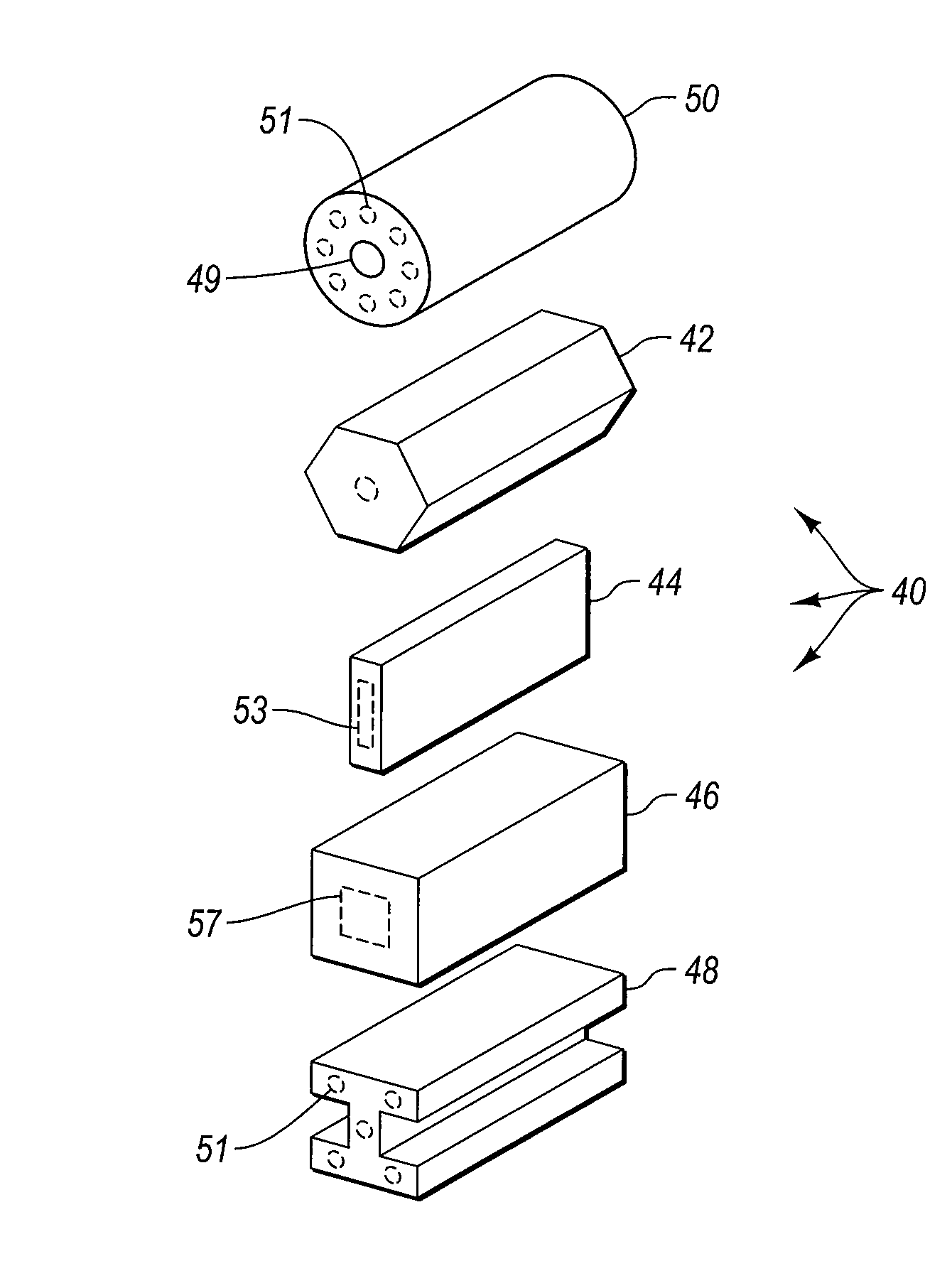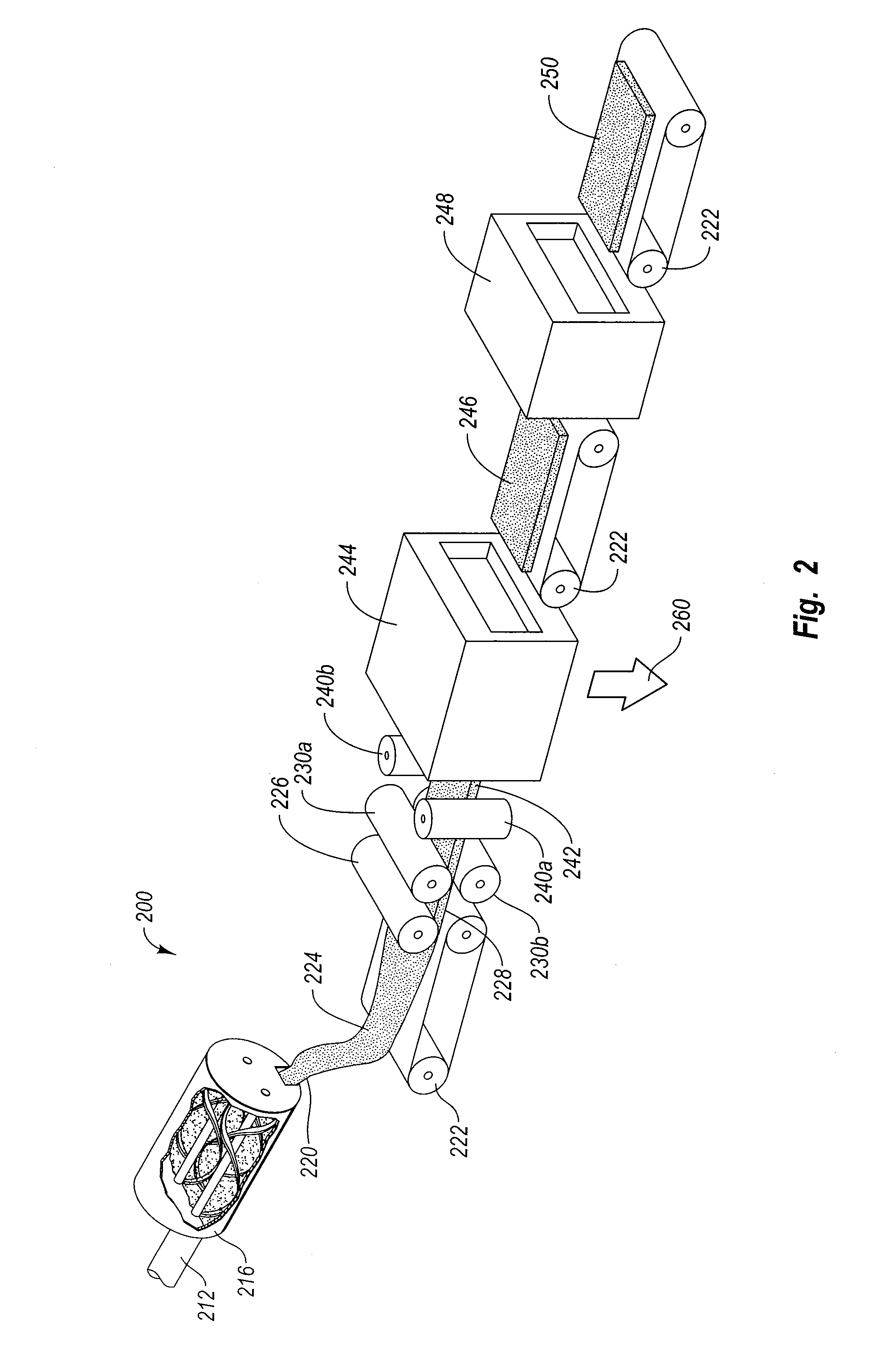Cementitious composites having wood-like properties and methods of manufacture
a cementitious composite and wood-like technology, applied in the direction of packaging, climate sustainability, solid waste management, etc., can solve the problems of reducing affecting the yield of cementitious composites, etc., to achieve the effect of reducing the amount of water that is initially used to form cementitious compositions, reducing the amount of water used to achieve extrusion, and high yield stress
- Summary
- Abstract
- Description
- Claims
- Application Information
AI Technical Summary
Benefits of technology
Problems solved by technology
Method used
Image
Examples
examples of embodiments
OF THE INVENTION
Example 1
[0190]Various extrudable compositions having different component concentrations are prepared in accordance with the present invention. All mixtures are mixed according to the normal mixing procedures described above and in the references incorporated herein. Briefly, a fibrous mixture of fiber, rheology modifying agent, and water is mixed for a mixing time of 1 hour before the additional components are added and mixed for an additional hour. The extrudable compositions are formulated as illustrated in Tables 1-6.
TABLE 1MixMixMaterials (wet)Mix 1Mix 2Mix 3Mix 456Fiber TypeHWHWSWSWSWSWFiber w / water (g)461790933122716271755Portland Cement (g)910910910910910910Cellulosic Ether (g)505050505050Starch (g)219219219219219219Water (g)165013201177883486355SW = softwood andHW = hardwood
TABLE 2Materials (wet)Mix 7Mix 8Mix 9Mix 10Mix 11Mix 12Fiber TypeSWSW / HWSW / HWSW / HWSW / HWSW / HWFiber w / water (g)1620333 / 83333 / 83333 / 83632 / 83333 / 83Portland Cement (g)910910910910910910Cellulo...
example 2
[0191]Various extrudable compositions having different component concentrations are prepared in accordance with Example 1. The extrudable compositions are formulated as illustrated in Tables 7-8.
TABLE 7Mix # 1Mix # 2% TotalMix # 3% TotalMaterialKG% Total WetKGWetKGWetSoftwood Fiber6.8011%6.810%510%Hardwood Fiber—0%00%00%Inorganic Microfiber—0%00%00%Lightweight Filler—0%00%00%Conventional Filler3.946%3.946%48%Rheology Modifying Agent1.002%0.61%0.61%Cement22.6035%22.634%2344%Water30.0047%3249%2038%Total64.34100%65.94100%52.6100%
TABLE 8Mix # 4Mix # 5% TotalMix # 6% TotalMaterialKG% Total WetKGWetKGWetSoftwood Fiber3.47%48%48%Hardwood Fiber00%00%12%Inorganic Microfiber00%36%2.55%Lightweight Filler00%12%00%Conventional Filler3.948%00%00%Rheology Modifying Agent0.61%0.61%0.61%Cement22.649%2345%2345%Water1634%2039%2039%Total46.54100%51.6100%51.1100%
[0192]The cementitious compositions exemplified by Mixes 1-6 are extruded into a building product and cured (e.g., by early heating). The amoun...
example 3
[0193]The flexural strength of the extruded cementitious building products were tested and compared to wood. More particularly, the flexural strength was tested as a function of the displacement in inches in response to an applied force in pounds. As such, the displacement of the wood (x) was compared to a non-reinforced extruded composite (solid diamond—♦), fiberglass rebar reinforced extruded building product (solid square—▪), and a steel rebar reinforced extruded building product (solid triangle—▴), as depicted in FIG. 8. As shown, the extruded cementitious building products mimicked the displacement of the wood up to about 275 lbs of force. Additionally, the fiberglass rebar and steel rebar reinforced extruded building products showed more displacement for the same force in comparison to the wood. Thus, extruded cementitious building products can mimic wood at lower-end forces, and the rebar reinforced cementitious building products can actually have greater displacement for a g...
PUM
| Property | Measurement | Unit |
|---|---|---|
| thickness | aaaaa | aaaaa |
| density | aaaaa | aaaaa |
| flexural modulus | aaaaa | aaaaa |
Abstract
Description
Claims
Application Information
 Login to View More
Login to View More - R&D
- Intellectual Property
- Life Sciences
- Materials
- Tech Scout
- Unparalleled Data Quality
- Higher Quality Content
- 60% Fewer Hallucinations
Browse by: Latest US Patents, China's latest patents, Technical Efficacy Thesaurus, Application Domain, Technology Topic, Popular Technical Reports.
© 2025 PatSnap. All rights reserved.Legal|Privacy policy|Modern Slavery Act Transparency Statement|Sitemap|About US| Contact US: help@patsnap.com



